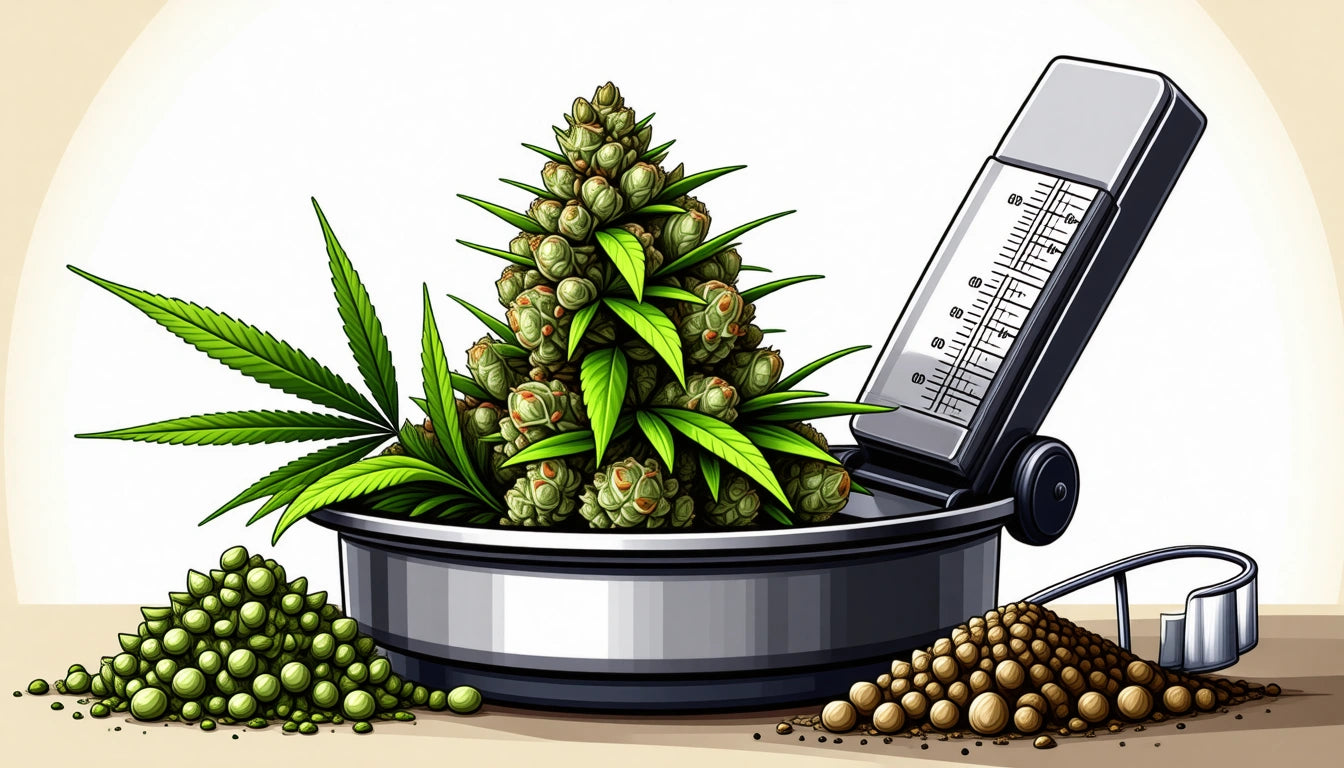Table of Contents
- Common Cannabis Measurements: From Grams to Pounds
- Visual Reference Guide: What Different Amounts Look Like
- Tools for Accurate Measurement: Scales and Alternatives
- Regional Measurement Differences: US vs. International Standards
- Packaging Considerations for Different Cannabis Quantities
- Measurement Best Practices for Cannabis Businesses and Consumers
Understanding Cannabis Measurements: A Guide to Weed Sizes and Scales
Cannabis measurements can be confusing for newcomers to the industry or recreational users. Whether you're a dispensary owner, cultivator, or consumer, understanding how weed is measured is essential for proper dosing, pricing, and compliance. This comprehensive guide breaks down the standard measurements used for cannabis flower, from the smallest personal amounts to bulk quantities.
Common Cannabis Measurements: From Grams to Pounds
Cannabis is typically measured using a combination of metric and imperial systems, creating a unique hierarchy of measurements that has become standard in the industry.
Gram (g)
The gram is the base unit for cannabis measurements. One gram is enough for 1-2 joints or several bowl packs, making it ideal for sampling new strains. Many dispensaries offer single grams for first-time users or those wanting variety.
Eighth (3.5g)
An eighth refers to 1/8 of an ounce, equaling 3.5 grams. This is perhaps the most common purchase amount for regular consumers, typically lasting a casual user about a week. The eighth has become a standard retail unit in dispensaries nationwide.
Quarter (7g)
A quarter ounce equals 7 grams and provides better value than buying two eighths. This amount suits moderate users or those who don't visit dispensaries frequently.
Half Ounce (14g)
At 14 grams, a half ounce represents substantial savings over smaller quantities. Regular consumers often purchase this amount to reduce dispensary visits and secure better pricing.
Ounce (28g)
An ounce, approximately 28.35 grams, is often the maximum legal purchase amount in many recreational states. Buying by the ounce typically offers the best per-gram value for consumers.
Quarter Pound (4oz/113.4g)
Moving into bulk territory, a quarter pound (QP) equals 4 ounces or about 113.4 grams. This quantity is generally relevant only to medical patients with higher needs or small-scale cultivators.
Half Pound (8oz/226.8g)
A half pound represents 8 ounces or approximately 226.8 grams, a quantity primarily handled by cultivators and processors rather than individual consumers.
Pound (16oz/453.6g)
A pound contains 16 ounces or about 453.6 grams. At this scale, proper storage becomes crucial, with many businesses using specialized storage solutions like one-pound mylar bags that maintain freshness while meeting regulatory requirements.
Visual Reference Guide: What Different Amounts Look Like
The visual appearance of cannabis quantities can vary significantly based on density, moisture content, and bud structure. Visual references can help consumers recognize appropriate quantities when purchasing.
- A gram typically appears as one medium-sized bud or 2-3 smaller buds
- An eighth fills roughly half of a standard prescription bottle
- A quarter ounce should fill a standard prescription bottle
- An ounce typically fills a sandwich-sized zip bag
Remember that denser strains will appear smaller by volume while weighing the same as fluffier varieties. This is why proper measurement tools are essential for accuracy.
Tools for Accurate Measurement: Scales and Alternatives
Precise measurement requires the right tools. Digital scales have become the industry standard due to their accuracy and ease of use.
Types of Scales
For cannabis measurement, several scale types are commonly used:
- Pocket scales (0.1g precision): Suitable for personal use and measuring grams to ounces
- Precision scales (0.01g precision): Ideal for dispensaries needing exact measurements
- Industrial scales: Used by cultivators and processors for weighing pounds
When purchasing a scale, look for models that offer calibration features and multiple measurement units. Learning how to properly weigh cannabis ensures accuracy whether you're a business or consumer.
Alternative Measurement Methods
In situations without a scale, some alternative methods can provide rough estimates:
- Coin comparison: A U.S. nickel weighs exactly 5 grams and can serve as a makeshift reference
- Visual comparison: Experienced users can estimate weights based on volume
- DIY balance scale: A ruler, pencil, and known weight can create a simple balance
While these methods provide approximations, they should never replace a proper scale for business transactions or precise dosing.
Regional Measurement Differences: US vs. International Standards
Cannabis measurement conventions can vary internationally, though the gram remains the universal base unit. In Europe and Canada, the metric system dominates, with cannabis typically sold in 1g, 3g, 5g, and 10g increments rather than eighths and quarters.
The hybrid imperial/metric system used in the US cannabis industry (grams for smaller amounts, ounces for larger) reflects the market's evolution from legacy operations to regulated commerce.
Packaging Considerations for Different Cannabis Quantities
Each cannabis quantity requires appropriate packaging to maintain freshness and comply with regulations:
- Grams to eighths: Small glass jars or mylar bags with proper sealing
- Quarters to ounces: Medium-sized containers with humidity control
- Multiple ounces to pounds: Large mylar bags or sealed containers with enhanced preservation features
For cultivators handling larger quantities, specialized storage solutions become necessary. Many operations rely on vacuum-sealed packages and heavy-duty mylar storage bags that prevent light degradation while controlling humidity.
Measurement Best Practices for Cannabis Businesses and Consumers
Understanding what are the weed measurements standard in your region helps both businesses and consumers ensure fair transactions. For businesses, consistent measurement practices build trust and ensure compliance with strict regulatory requirements.
For Businesses:
- Calibrate scales regularly using certified weights
- Account for packaging weight (tare) before measuring product
- Consider moisture loss when preparing packaged products
- Document all measurements for compliance purposes
- Train staff on proper weighing techniques
For Consumers:
- Understand local legal purchase limits
- Recognize that cannabis density varies by strain
- Consider investing in a small scale for personal verification
- Store cannabis properly to prevent weight loss through moisture evaporation
As the cannabis industry continues to mature, standardized measurement practices will become increasingly important for consistency across markets. Whether you're growing your own plants and tracking their maximum height potential, or simply want to understand what you're purchasing, these measurement fundamentals provide the knowledge needed to navigate cannabis quantities with confidence.











Leave a comment
All comments are moderated before being published.
This site is protected by hCaptcha and the hCaptcha Privacy Policy and Terms of Service apply.